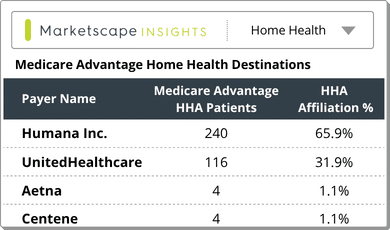Jess Chew, GM, PAC Provider Growth
With more than 10 years’ experience in healthcare marketing, Jessica not only leads our marketing team but is also a passionate advocate and frequent user of our marketing intelligence solutions. After graduating from the University of Georgia with a bachelor’s in journalism, Jessica got her start in marketing at Gannett, the largest newspaper publisher in America. She thought this entry-level job was the first step on the road to a career as an investigative reporter — but immediately became hooked on marketing. At Trella Health, she’s able to do all the things she loved about journalism — digging for information and insights, helping people share their stories — and she’s also able to make a meaningful difference in the way post-acute care is provided.What Is an Integrated Delivery Network?
By Jess Chew | May 11, 2022
An integrated delivery network (IDN) is an organization that owns and operates a network of several healthcare facilities. These healthcare facilities include things like hospitals, care centers, physician groups, clinics, surgery centers, and more.
There are three main types of integrated delivery networks: Horizontal Integration, Vertical Integration, and Strategic Integration.
Horizontal Integration
A horizontal integration IDN is a multi-hospital system. The hospitals may be regional or national, but the organization of the IDN is such that the hospitals act somewhat independently of each other, though they all act under the direction of the IDN.
Vertical integration
In a vertical integration IDN, the services provided care for people in all stages of life, from labor and delivery care to end-of-life and hospice assistance. These networks can include physician networks of all kinds of doctors, including pediatricians, orthopedics, surgeons, OB/GYNs, and so on. They will also generally include assisted-living centers. While a horizontal IDN has many spread-out facilities, a vertical IDN wants to keep patients in the same network for all of their needs through all stages of life.
Strategic Integration
Strategic IDNs are similar to vertical integration IDNs, except that they focus more on the organization of the operation, including an emphasis on technology. This means that the strategic IDNs will have more control over medical information systems, an emphasis on technology, and an administrative system that makes all the facilities work together fluidly.
What is an example of an IDN?
Some of the most well-known integrated delivery networks include The Mayo Clinic, The Cleveland Clinic, Memorial Sloan Kettering Cancer Center, The Huntsman Cancer Center, and more.
What is the difference between a health system and an IDN?
An IDN is a form of a health system, but the general difference between a traditional health system and an IDN is that health systems are generally independent organizations that are working together, through varying levels of contractual agreements in which they share financial and medical responsibilities to care for patients. An IDN, on the other hand, controls all the facilities, physicians, hospitals, technologies, and administrations under them. The IDN, therefore, has a more cohesive structure. An IDN also may have agreements with specific health plans.
What is the difference between an IDN and a GPO
A GPO is a group purchasing organization which enables hospitals and other facilities to work together to pool purchasing power to get better prices and rates. They share technical expertise, and technologies, and adopt uniform equipment and supplies. The IDN, on the other hand, is not a confederation of small independent groups, but a cohesive whole.
To learn how Trella can help your ACO succeed, schedule a demo today.













